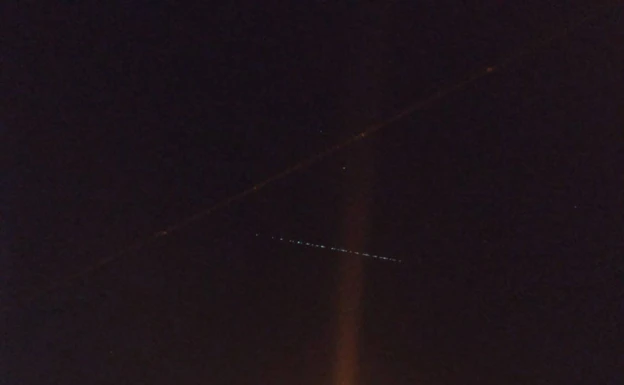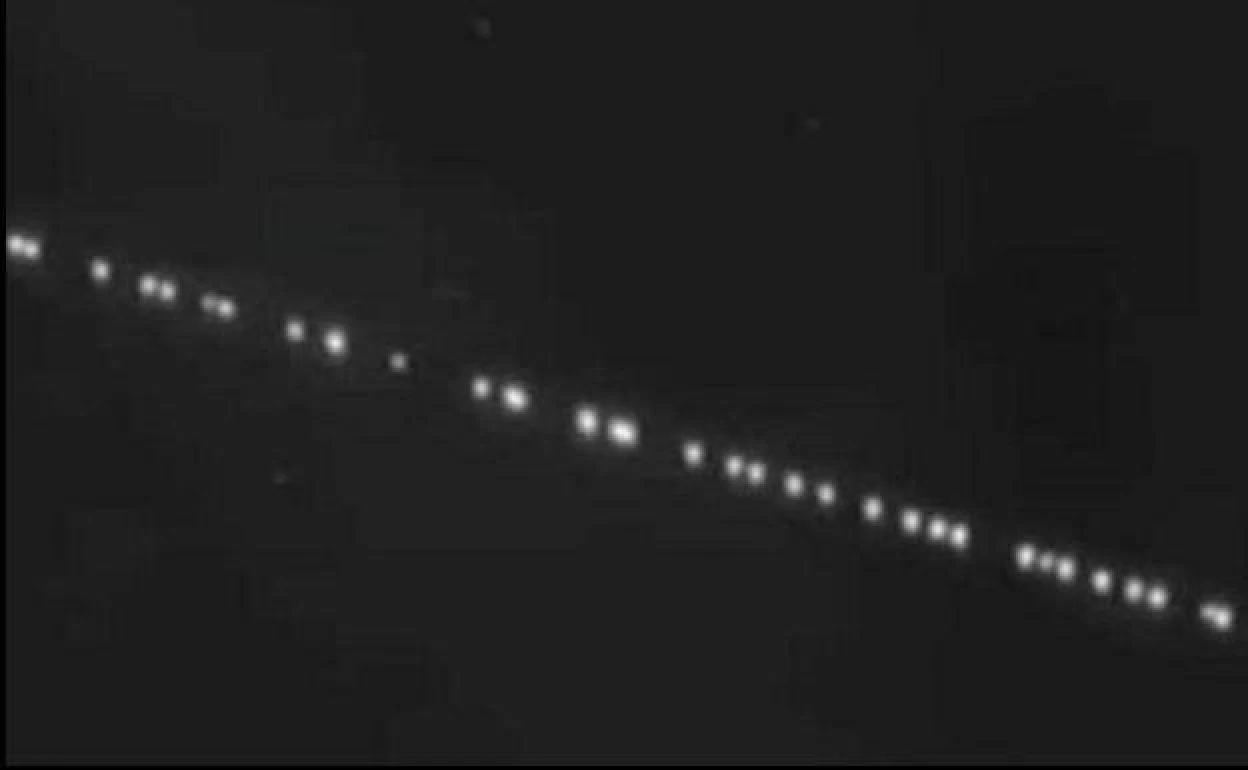This is when you can next see the strange stream of lights in the night sky that appeared on Sunday
Elon Musk's SpaceX company is planning to launch more satellites from Cape Canaveral in Florida soon and they may be visible across the south of Spain following day
Almudena Nogués
Malaga
Tuesday, 27 September 2022, 12:29
Last Sunday evening many people took to social media to ask whether anyone else had seen a long stream of lights in the sky over Malaga. Although there was speculation that aliens were invading, the reality was more mundane: these lights were Starlink satellites which had been launched by Elon Musk’s SpaceX company. They are being sent up to space in groups of around 50 at a time, and the intention is to have 4,000 there in total to provide internet coverage over the entire world including the most remote areas.
Anyone who is sorry not to have seen the lights on that occasion may have another chance soon. Astrophysicist José María Madiedo, the chief researcher at the Smart Project, has said that another launch is being planned from Cape Cañaveral in Florida on 30 September.
“We don’t yet know what time it will take off so we don’t know whether we will be able to see them from here or not, but we will be able to tell soon after the launch. The satellites can normally be seen the following day, in other words Saturday 1 October,” he explained.
“And with a bit of luck, if its trajectory approaches the Peninsula, we would be able to see the re-entry of the second stage of the Falcon 9 rocket, as we have done on other occasions,” Madiedo said. That is another good reason to keep our eyes on the sky.
Brighter than some stars
The Starlink project can be defined as a constellation of thousands of small satellites in orbit at altitudes of between 450 and 1200 kilometres and they will be useful for scientific, military and civilian fields.
However, the large solar panels with which they have been constructed reflect sunlight back to Earth and astronomers have already warned that they can be brighter than some stars and could hamper space studies and observation of the night sky.

